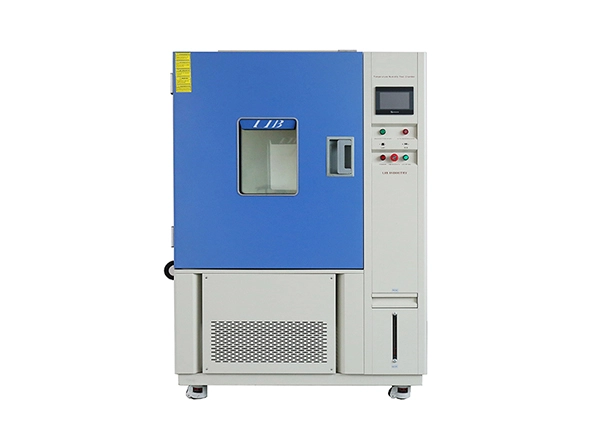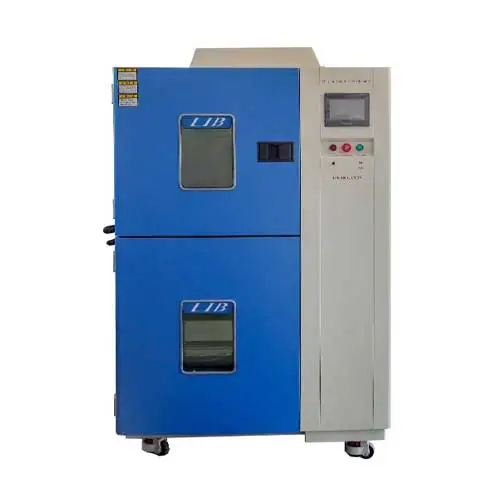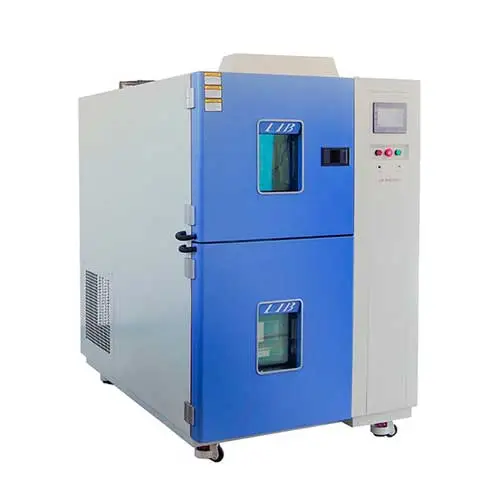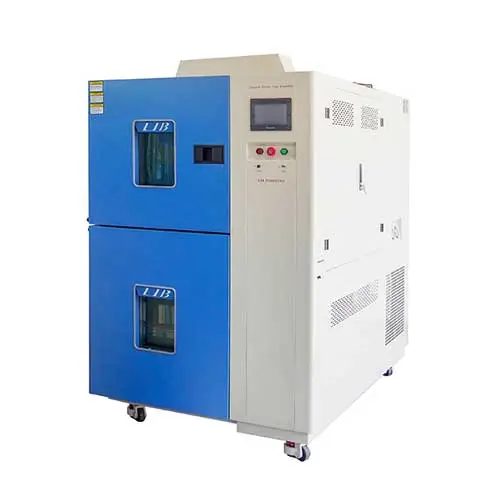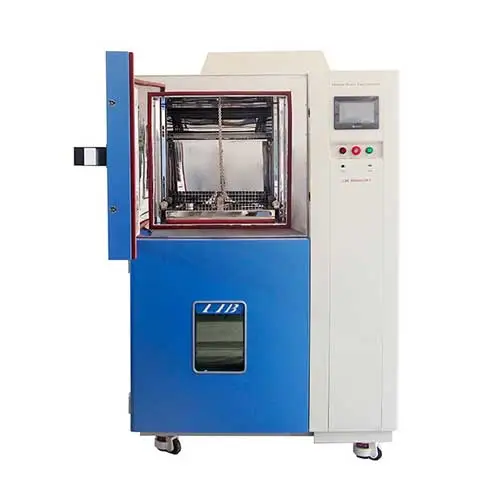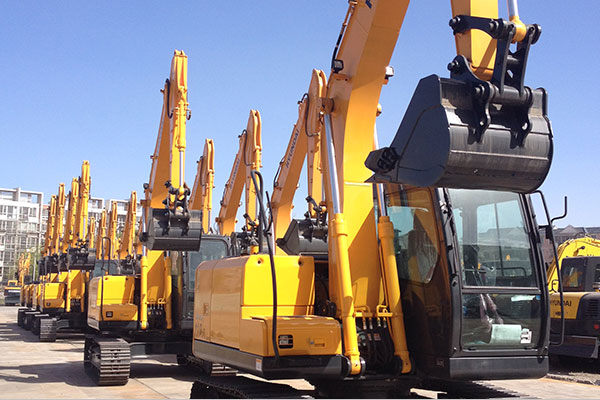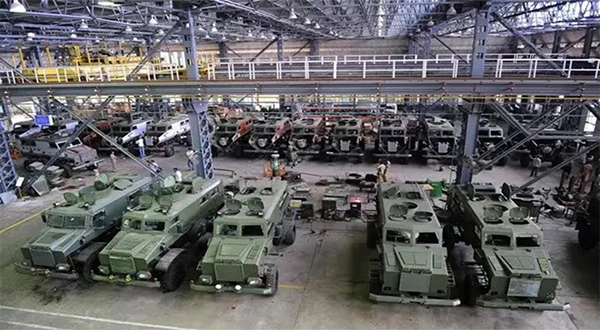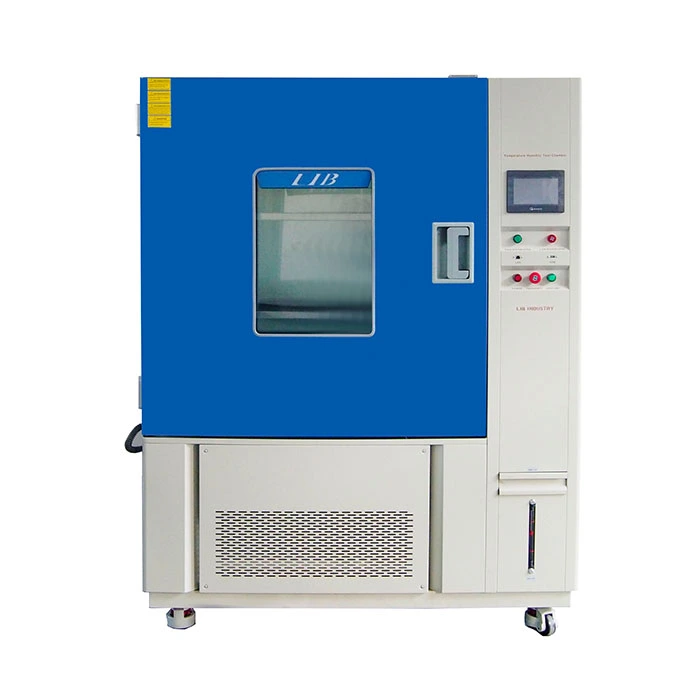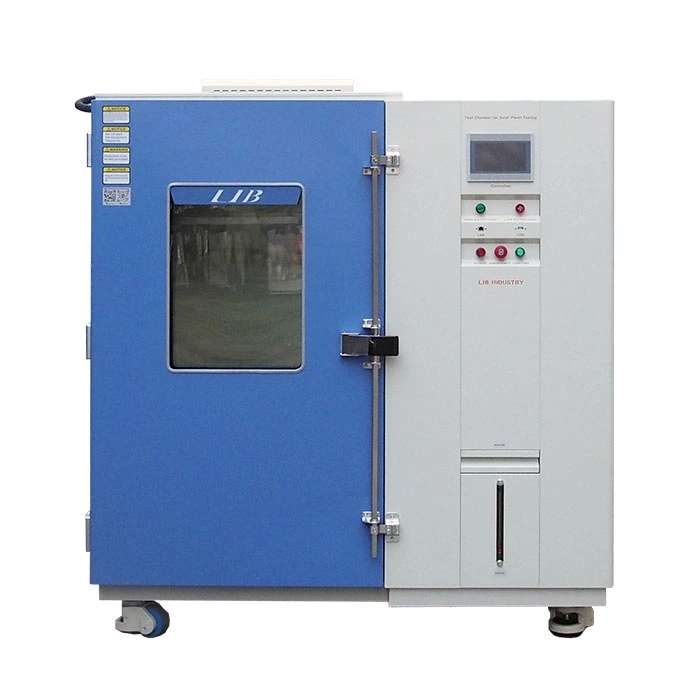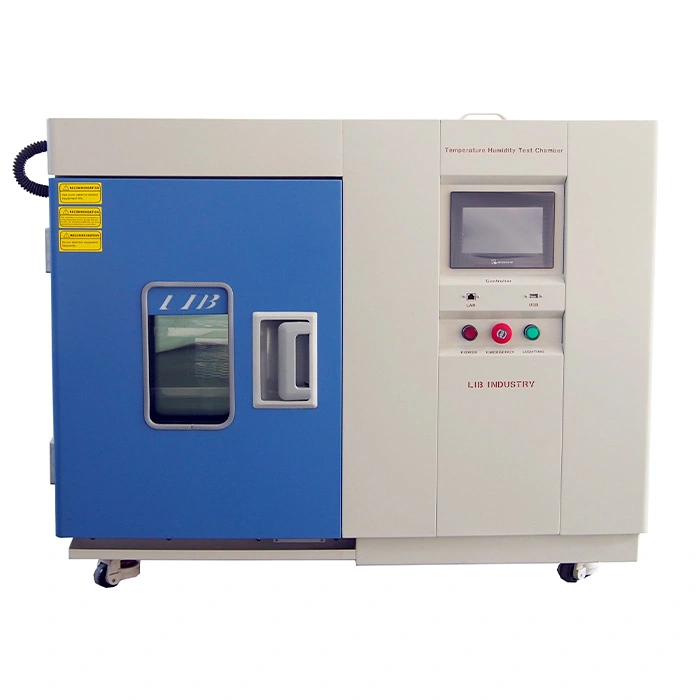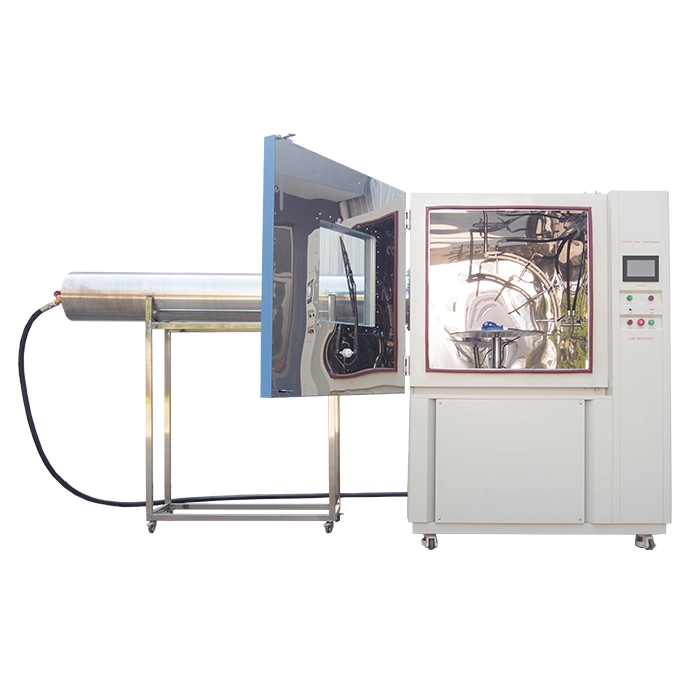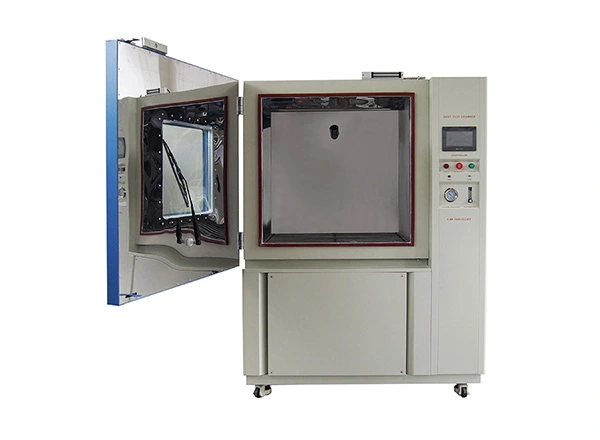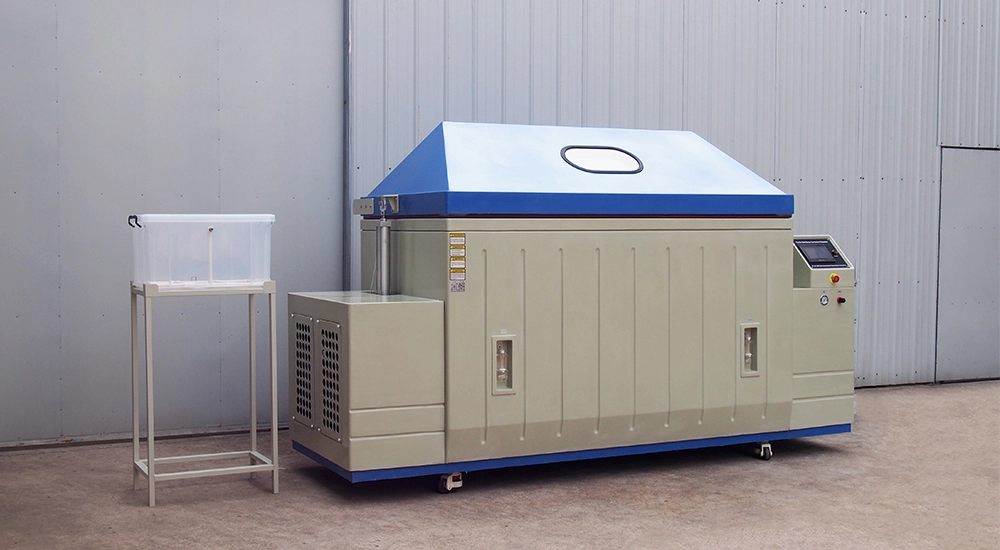Thermal Shock Chamber Features and Benefits
1. The thermal shock chamber has upper and lower basket type and static damper type.
2. The high temperature chamber can realize air-to-air thermal shock testing, air-to-liquid and liquid-to-liquid thermal shock testing.
3. From obtaining customer needs, to discussing solutions, production, transportation, installation and commissioning, LIB can realize one-stop solutions.
4. The thermal shock environmental chambers, a kind of portable temperature humidity chamber, are mainly used in high and low temperature shock test of automobiles, EV batteries, electronic products and etc.
Specifications of Thermal Shock Chamber
Model | TS-162 | TS-340 | TS-500 | TS-1000 |
Internal Dimensions (mm) | 300*300*250 | 450*450*360 | 650*650*500 | 850*850*700 |
Overall Dimension (mm) | 1560*870*1545 | 1710*1020*1845 | 1910*1220*2265 | 2110*1420*2665 |
Interior Volume (mm) | 22L | 72L | 211L | 505L |
Loading Capacity | 20kg | 30kg | 50kg | 60kg |
Pre-heat Room | Upper limit Temperature | +220℃ |
Heating Time | Ambient ~ + 200℃, within 30 minutes |
Pre-cool Room | Lower limit Temperature | -75℃ |
Cooling time | Ambient ~ -70℃, within 30 minutes |
Test Room | High Temperature Exposure Range | Ambient +20 ~ +200°C |
Low temperature Exposure Range | –65 ~ -5°C |
Temperature Fluctuation | ≤±0.5℃ |
Temperature Deviation | ≤±3 ℃ |
Temperature Recovery Time | Within 5 minutes |
Cooling System | Mechanical compression refrigeration system |
Controller | Programmable color LCD touch screen controller, Ethernet connection |
Safety Device | Over-temperature protection, Over-current protection; Refrigerant high-pressure protection; Earth leakage protection |
Exterior Material | Steel Plate with protective coating |
Interior Material | SUS304 stainless steel |
Observation Window | Interior lighting, double-layer thermo stability silicone rubber sealing |
Standard Configuration | 2 shelves |
Thermal Shock Chamber Construction
LIB 2-zone hot cold thermal shock test chamber is available in small capacity and large capacity to meet different testing requirements. Test can be performed during thermal shock testing from -70 to +200°C.The specimen automatic transferred from cold chamber to hot chamber by basket. The basket slides vertically and smoothly through rails, to make the specimen is exposed to the two chambers.
The construction of a temperature shock test chamber typically includes the following components:
1. Insulated chamber: The main body of the chamber is typically constructed from stainless steel or other high-quality materials to provide insulation and durability. The chamber is divided into two compartments – a hot compartment and a cold compartment.
2. Heating and cooling systems: The hot compartment is equipped with a heating system, such as electric heaters or gas burners, to rapidly raise the temperature. The cold compartment is equipped with a cooling system, such as compressors or liquid nitrogen, to rapidly lower the temperature.
3. Temperature control system: A PID temperature control system is used to precisely regulate the temperature in each compartment. This system may include sensors, heaters, and coolers to maintain the desired temperature levels.
4. Transfer mechanism: A transfer mechanism, such as a conveyor belt or robotic arm, is used to move the test samples between the hot and cold compartments. This allows for rapid temperature changes and ensures consistent testing conditions.
5. Safety features: Thermal shock chambers are equipped with safety features to protect operators and prevent damage to the equipment. This may include emergency stop buttons, overheat protection, and automatic shutdown systems.
Overall, the construction of a thermal shock chamber involves a combination of high-quality materials, precise temperature control systems, and safety features to create a reliable and effective testing environment for a wide range of materials and products.
Thermal Shock Chamber Functions and Uses
Thermal shock test chambers are specialized testing devices that subject materials to extreme temperature fluctuations in order to assess their ability to withstand rapid changes in temperature. These types of environmental chambers for sale are commonly used in the aerospace, automotive, electronics, and telecommunications industries to evaluate the reliability and performance of materials and products under varying thermal conditions.
The main functions and uses of thermal shock chambers include:
1. Testing for product reliability: Thermal shock chambers are used to simulate real-world conditions that products may be exposed to, such as sudden temperature changes during transportation or operation. By subjecting materials to rapid thermal cycling, manufacturers can assess the reliability and durability of their products.
2. Evaluating material properties: Thermal shock chambers are also used to study the thermal properties of materials, such as their thermal expansion, contraction, and conductivity. This information is crucial for designing products that can withstand temperature fluctuations without compromising their performance.
3. Quality control: Thermal shock chambers are a key tool in quality control processes, allowing manufacturers to identify potential defects or weaknesses in materials and products before they reach the market. By subjecting samples to extreme temperature changes, manufacturers can detect any flaws that may lead to product failure.
4. Research and development: Thermal shock chambers are used in research and development to study the effects of temperature fluctuations on materials and products. Researchers can use these chambers to test new materials, coatings, or manufacturing processes to determine their suitability for specific applications.
5. Compliance testing: Many industries have specific standards and regulations regarding the performance of materials and products under extreme temperature conditions. Thermal shock chambers are used to conduct compliance testing to ensure that products meet these requirements and are safe for use.
Overall, thermal shock chambers play a crucial role in evaluating the performance, reliability, and durability of materials and products under varying thermal conditions. By subjecting samples to extreme temperature fluctuations, manufacturers can identify potential issues and make informed decisions to improve the quality of their products.
Thermal Shock Chamber Working Principle
Lib Industry TS series thermal shock chamber has two independently controlled hot and cold zones, the specimen automatic transferred between different temperature zones. Users can easily observe the product as it’s transferred between different temperature zones through built-in viewing windows.
The working principle of a thermal shock chamber involves the following steps:
1. The product to be tested is placed inside the thermal shock chamber, which consists of three separate compartments: a hot chamber, a cold chamber, and a transfer mechanism.
2. The hot chamber is heated to a high temperature, typically ranging from 50°C to 200°C, while the cold chamber is cooled to a low temperature, usually ranging from -40°C to -100°C.
3. The transfer mechanism rapidly moves the product back and forth between the hot and cold chambers, exposing it to extreme temperature changes within a short period of time, typically in a matter of seconds.
4. The rapid temperature changes cause thermal stress on the product, which can lead to cracking, warping, or other forms of damage if the product is not able to withstand the thermal shock.
5. The product is then evaluated for any visible signs of damage or tested for functionality to determine its ability to withstand thermal shock.
Overall, the working principle of a thermal shock environmental chamber involves subjecting a product to extreme temperature changes in a controlled environment to assess its thermal resistance and durability.

